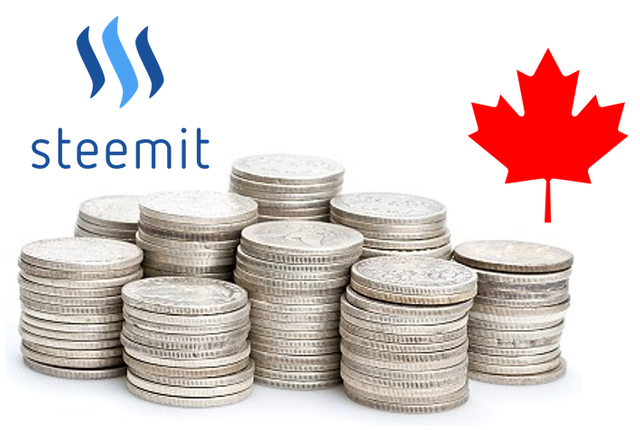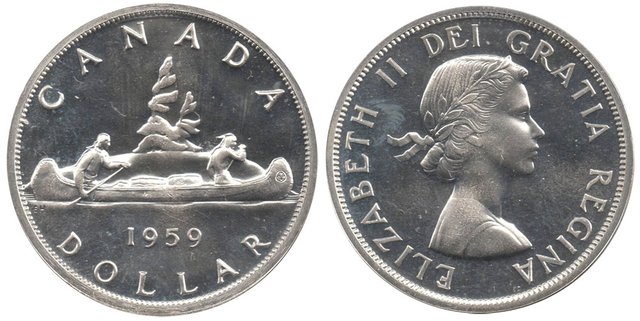
Silver Content in Common Coins Part 2
CANADIAN EDITION
This is a continuation of the article I previously wrote regarding the silver content and inherent dollar value of what may be lurking in your pockets unknowingly. In this edition I attempt to expand collective awareness by introducing you to Canadian silver coinage.
Canadian silver coins follow a very similar pattern to its American cousin. It was utilized extensively in everyday coins, thus making them intrinsically valuable. Interestingly enough the purchasing power of a silver denominated coin remained pretty steady throughout the years so long as the nation’s currency derived its worth through the value of silver (and gold).
It’s interesting to note that once this decoupling of the nation’s currency to the value of silver and gold occurred its unit of currency, essentially fiat in nature, then began its decline in purchasing power. This is largely a function of the supply of said currency in existence. As supply grew, purchasing power dropped.
From Part 1 - (https://steemit.com/anarchism/@freeinthought/silver-change-in-your-pocket-and-what-it-s-worth):
“With the price of silver north of $20 / troy oz. and real inflation running rampant via money printing in various forms the world over, it would be prudent and wise for one to understand a bit about the value of what may be lurking in your pockets or desk drawers.”
In Canada, silver was commonly used in pocket change until 1968. Below is a listing of common coin denominations, years and silver content. At $20 / oz you can do the math and quickly see that these coins are worth a lot more than a few cents. With the current state of the global banking system it’s probably best to hang on to whatever silver coins you can get your hands on.

Denomination / Year(s) / % Silver / Weight (Troy Oz.) / Value at $20 per oz Silver
5 cents / 1858-1921 / 92.5% / 0.0345 / $0.69
10 cents / 1858-1919 / 92.5% / 0.069 / $1.38
10 cents / 1920-1967 / 80% / 0.060 / $1.20
10 cents / 1967-1968 / 50% / 0.0375 / $0.75
25 cents / 1908-1919 / 92.5% / 0.173 / $3.47
25 cents / 1920-1967 / 80% / 0.150 / $3.00
25 cents / 1967-1968 / 50% / 0.094 / $1.87
50 cents / 1908-1919 / 92.5% / 0.346 / $6.91
50 cents / 1920-1967 / 80% / 0.300 / $5.98
1 dollar / 1935-1967 / 80% / 0.600 / $12.00
Note: Coins of both 50% and 80% silver content for 10c & 25c pieces were minted in 1967.
Free In Thought, 2016
I've gone through my horde of change and separated out all the clad from the good metals and rolled the clad and brought it back to the bank. i have a few rolls of pre 65 nickels and dimes and the such I'm holding onto, and i separate my change now as I get it.
Downvoting a post can decrease pending rewards and make it less visible. Common reasons:
Submit
Time to check my drawers...! Thanks for the tip... Eh!
Downvoting a post can decrease pending rewards and make it less visible. Common reasons:
Submit
A few years ago, I went around from bank to bank asking for half dollar rolls, in order to look through them for the one's with silver content (1965-1968 had some silver still). One bank gave me 4 rolls of all pre 1965 silver half dollars! I guess they were waiting for someone like me to give a treat to!
Downvoting a post can decrease pending rewards and make it less visible. Common reasons:
Submit
I had a similar experience about 10 years ago. I bought a coffee in the mall at a kiosk and paid with a $10 bill. The attendant apologized while handing me my change saying all I have is coins while handing me a handful of old 1950s quarters. At the time I recall they were worth about $2.50 each. So from $10 I made out with a coffee and about $30 in change. Not bad.
Downvoting a post can decrease pending rewards and make it less visible. Common reasons:
Submit